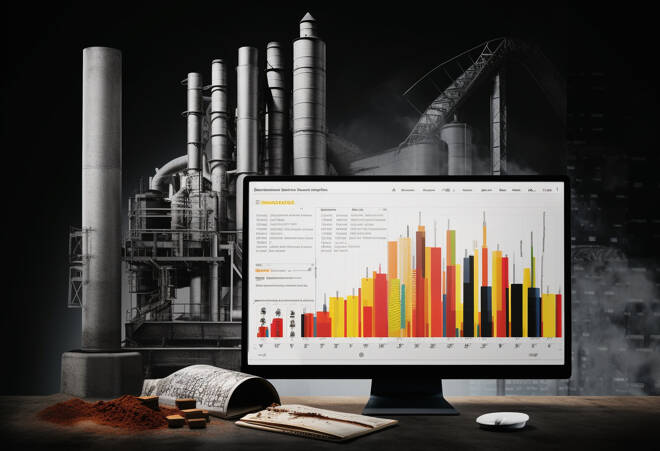Advertisement
Advertisement
Euro Area PPI Up by 0.5% in September, Matching Expectations
By:
Eurozone industry prices (PPI) up monthly but down yearly with energy sector and regional variances driving a bearish outlook.
Highlights
- Monthly price growth; annual figures fall.
- Energy sector’s significant annual price drop.
- Regional disparities mark uneven recovery.
Industrial Producer Prices: Divergent Trends Across Eurozone
In the complex economic tapestry of the Eurozone, September 2023’s industrial producer price (PPI) movements, as estimated by Eurostat, presented a mixed scenario of modest growth and significant annual decline. The detailed figures offer insight into the changing dynamics of the Eurozone’s industrial sector.
Subtle Monthly Increases Amidst Annual Declines
Despite a slight monthly uptick in industrial producer prices by 0.5% in the Eurozone and 0.6% in the EU compared to August 2023, the year-on-year comparison tells a different story. Compared with September 2022, there was a notable decrease of 12.4% in the Eurozone and 11.2% in the EU, underscoring the volatility and challenges faced over the past year.
Sector-Specific Shifts Reflect Diverse Market Forces
The monthly increase was not uniform across all sectors. The energy sector saw a significant rise by 2.2% in the Eurozone, yet this was balanced by stability in capital goods and durable consumer goods. The price for intermediate goods and non-durable consumer goods saw a minor decrease. This divergence suggests a selective demand across different market sectors, influenced by varying economic activities and consumer behaviors.
Annual Comparisons Highlight Energy Sector’s Impact
Annually, the energy sector’s prices plummeted by 31.3% in the Eurozone, a stark contrast to the monthly figures, reflecting the long-term impact of energy market fluctuations and regulatory changes. Despite this, there was a reassuring increase in prices for capital goods, durable, and non-durable consumer goods, hinting at resilience and perhaps a cautious optimism for industrial production in these areas.
Regional Disparities Underline Divergent Economic Conditions
The monthly data revealed significant disparities among Member States, with Luxembourg witnessing an extraordinary surge in industrial producer prices, whereas nations like Finland and Germany experienced declines.
Annually, the differences were even more pronounced, with Ireland, Bulgaria, and Italy recording substantial decreases, and Luxembourg, Hungary, and Slovenia documenting increases. These variations underscore the uneven economic recovery and diverse fiscal realities within the EU.
Forecast and Analysis
Looking ahead, the short-term forecast for the Eurozone’s industrial sector remains cautiously bearish, given the significant annual price decreases, especially in the energy sector. However, the resilience in capital and consumer goods prices could cushion the impact. The overall economic sentiment will likely continue to be influenced by energy prices due to their considerable weight in the industrial price index.
Investors and policymakers will need to navigate these mixed signals carefully, balancing the volatility in the energy sector with the steadier performance of other industrial sectors. The coming months will be crucial in determining whether these trends will solidify into a pattern of recovery or if the Eurozone’s industrial sector will face further headwinds.
About the Author
James Hyerczykauthor
James Hyerczyk is a U.S. based seasoned technical analyst and educator with over 40 years of experience in market analysis and trading, specializing in chart patterns and price movement. He is the author of two books on technical analysis and has a background in both futures and stock markets.
Advertisement
